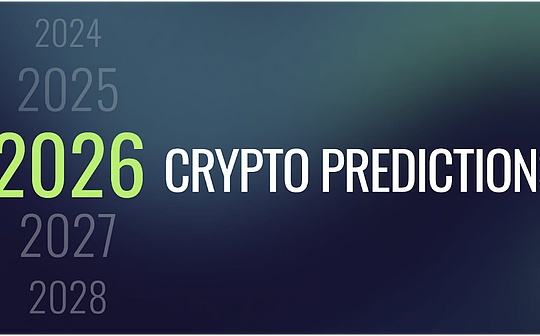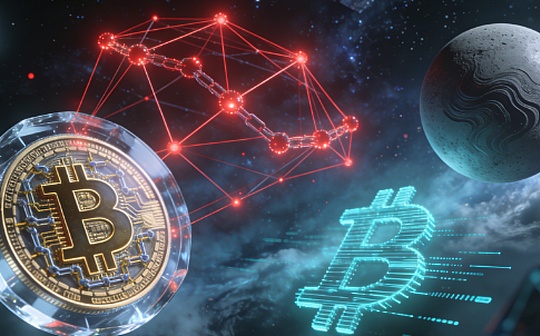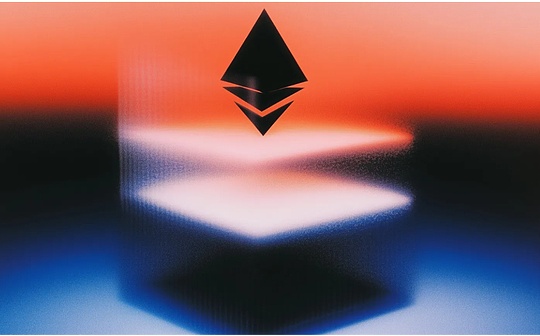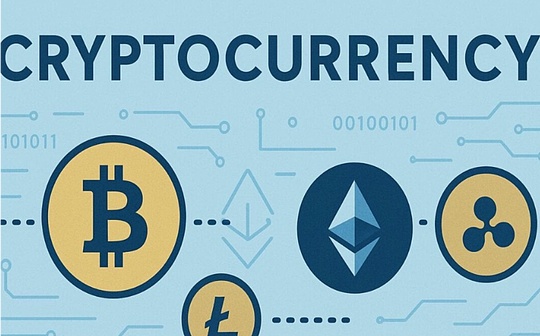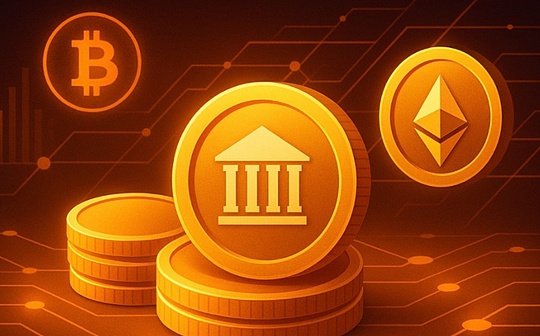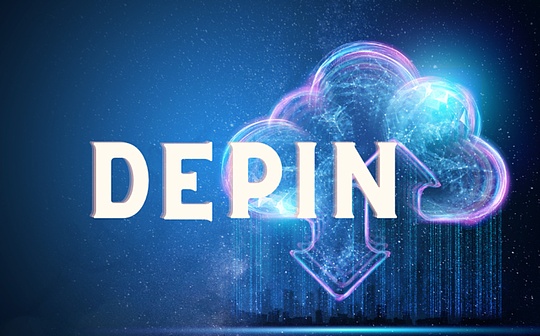
Author: Paul Timofeev Source: Shoal Research Translation: Shan Ouba, Bitchain Vision
Discuss the role of calculating decentralization infrastructure in supporting the decentralized GPU market, and provide comprehensive analysis and supplementary case research.
Key points
-
With the rise of machine learning, especially the development of artificial intelligence, a large number of computational dense workloads need to be calculated, and computing resources become more and more sought after.However, due to the large number of large companies and governments accumulating these resources, startups and independent developers are now facing GPU shortages in the market, resulting in too much cost or lack of acquisition.
-
Calculate DEPINS By allowing people from all over the world to provide idle computing resources (such as GPU) in exchange for currency rewards, the decentralized market for computing resources is achieved.This aims to help GPU consumers who have not been fully served to obtain new supply flow, and obtain the development resources required for their workloads at a lower cost and expenses.
-
Today, calculating DEPINS still faces many economic and technical challenges when competing with traditional centralized service providers. Some of these problems will be resolved by themselves over time, and other issues need to propose new solutions and optimization measures in the future.
Calculation is new oil
Since the Industrial Revolution, technology has promoted human progress at unprecedented speeds, and almost every aspect of daily life has been affected or completely changed.Computers eventually became the crystallization of collective researchers, scholars and computer engineers.Originally designed to solve large -scale arithmetic tasks to assist advanced military operations, computers have developed into a pillar of modern life.With the continuous growth of computer impact on human beings, the demand for these machines and its required resources is also growing, exceeding available supply.In turn, this has caused the dynamics of most developers and companies that cannot obtain key resources in the market, making the development of machine learning and generating artificial intelligence. Today, the most transformed technology is in the hands of a few players with strong funds.At the same time, a large number of idle computing resources provide a favorable opportunity for alleviating the imbalance between the computing supply and the demand, which exacerbates the needs of sufficient coordination mechanisms between the participants of the trading parties.Therefore, we believe that the decentralized system supported by blockchain technology and digital assets is essential for the development of more extensive, more democratic and responsible generating artificial intelligence products and services.
Computing resources
Calculation can be defined as various activities, applications, or workloads that emit clear output based on a given input.In the end, it refers to computer computing and processing capabilities. This is the basis for these machines to play a core utility in today’s modern world. Last year, only computers generated revenue of up to $ 1.1 trillion.
Computing resources refer to hardware and software components supporting computing and processing.As the number of applications and functions supported by these components continues to grow, they are becoming more and more important in daily life.This has led to the accumulation of as many resources as possible between the state forces and enterprises as a means of survival.This is reflected in the market performance of companies that provide these resources (for example, NVIDIA, its market value has increased by more than 3000%over the past 5 years).
GPU
Graphic processing unit (GPU) is one of the most important resources in modern high -performance calculations.Its core function is to accelerate the computer graphics workload through parallel processing as a special electronic circuit.Initially serving the game and personal computer industry, the GPU has developed to serve many emerging technologies that serve the future world (such as large machines and personal computers, mobile devices, cloud computing, and Internet of Things).However, the rise of machine learning and artificial intelligence has exacerbated the demand for these resources -GPU accelerates machine learning and artificial intelligence operations through parallel execution calculations, thereby enhancing the processing capabilities and performance of the final technology.
The rise of artificial intelligence
The core of artificial intelligence (AI) is a technology that allows computers and machines to simulate human intelligence and solve problems.A AI model runs as a neural network composed of many different data blocks.The model requires processing ability to identify and learn the relationship between these data, and then refer to these relationships when creating output based on a given input.
AI development and production are not new things; in 1967, Frank Rosenblatt built Mark 1 Perceptron, the first computer -based computer based on the trial and error method to “learn”.In addition, a large number of academic research on the development of modern AI was released in the late 1990s and the early 2000s, and the industry has continued to develop since then.
In addition to research and development efforts, the “narrow sense” AI model also supports various powerful applications used today.Examples include social media algorithms, Apple’s Siri and Amazon’s Alexa, customized product recommendations, and so on.It is worth noting that the rise of deep learning has changed the development of artificially generating intelligence (AGI).Deep learning algorithm uses larger or “deeper” neural networks than machine learning applications, as a more extended alternative with a broader performance capacity.The generative AI model “Code the simplification of its training data, and refer to it to emit a similar but different new output.”
Deep learning enables developers to extend the generative AI model to images, voice, and other complex data types, and milestone applications like ChatGPT have created the modern and fastest user basic records.Early versions that may be realized.
Considering this, the generation AI development involves multiple computing dense workloads, and it is not surprising that it is not surprising that a large number of processing capabilities and computing capabilities are required.
According to the “Triple Strike of Deep Learning Applications”, AI application development is subject to several key workloads:
-
train-The model must process and analyze the big data set to learn how to respond to a given input.
-
Tun-M model experience a series of duplicate processes, which adjusts and optimize various suplments to improve performance and quality.
-
simulation-Wizen before deployment, some models (such as strengthening learning algorithms) must be performed for a series of test simulation.
Calculation scarcity: demand & gt; supply
In the past few decades, various technological progress has promoted unprecedented demand for computing and processing capabilities.Therefore, today’s demand for computing resources (such as GPU) far exceeds available supply, causing bottlenecks for AI development. If there is no effective solution, this situation will only continue to deteriorate.
The broader restrictions on supply are also driven by a large number of companies that are actively purchased by GPUs that exceed their actual needs. This is not only a competitive advantage, but also a means of survival in the modern global economy.Computing providers usually adopt a contract structure that requires long -term capital commitments to provide customers with supply far beyond their demand requirements.
Epoch research shows that the overall number of computing -intensive AI models has grown rapidly, indicating that the demand for resources to promote these technologies will continue to grow rapidly.
>
As the complexity of the AI model continues to increase, the demand for applicants for computing and processing capabilities is also growing.Conversely, the performance of the GPU and its availability will play an increasingly important role.This trend has emerged, and the demand for high -end GPUs has increased. For example, the GPU produced by NVIDIA, the company calls the GPU “rare earth metal” or “gold” in the AI industry.
AI’s fast commercialization may control the control of control to a few technology giants, similar to today’s social media industry, which has aroused concerns about the ethical foundation of these models.A famous example is the recent Google Gemini controversy.Although many of the strange responses to various prompts did not cause any actual danger at the time, the incident showed the inherent risks led by a few companies and controlled AI development.
Today’s technology startups are facing more and more challenges to obtain computing resources to support their AI models.These applications need to perform a large number of computing dense processes before model deployment.For small enterprises, accumulating a large number of GPUs is an unsustainable effort, and traditional cloud computing services such as AWS or Google Cloud provide a seamless and convenient developer experience, but its limited capacity eventually leads to high high capacity.Costs make many developers discourage.In the final analysis, not everyone can propose a plan to raise $ 7 trillion for hardware costs.
So what should I do?
NVIDIA estimated that more than 40,000 companies used GPUs for AI and accelerated calculations, and there were more than 4 million developer communities worldwide.Looking forward to the future, the global AI market is expected to increase from US $ 515 billion in 2023 to US $ 2.74 trillion in 2032, with an average annual growth rate of 20.4%.At the same time, the GPU market is expected to reach US $ 400 billion by 2032, with an average annual growth rate of 25%.
However, after the AI Revolution, the increasingly increasing imbalance between the supply and demand of computing resources may create a fairly anti -Utopia future, and a few of them have the development of many transformative technologies.Therefore, we believe that all roads lead to decentralized alternative solutions to help the gap between the needs of AI developers and available resources.
DEPINS role
What is DEPINS?
DEPIN is a term created by the MESSARI research team, representing a decentralized physical infrastructure network.From the perspective of disassembly, decentralization means that there is no single entity drawing rent and restricted access.At the same time, physical infrastructure refers to the “real life” physical resources that use.The network refers to a group of participants work in a coordinated manner to achieve a predetermined target or target set.Today, DEPINS has a total market value of about 28.3 billion US dollars.
The core of DEPINS is the global node network, connecting physical infrastructure resources with the blockchain to realize the decentralized market, connect buyers and suppliers, anyone can become a supplier and serve them and the network of the networkContribution is compensated.In this case, the central intermediaries that can access the network through various laws and regulatory methods and service expenses are replaced by the decentralized protocol composed of smart contracts and code, and they are managed by their respective token holders.
The value of DEPINS is that they provide alternatives of decentralization, access, low -cost and scalable traditional resource networks and service providers.They achieved a decentralized market, aiming to achieve a specific ultimate goal; the cost of goods and services is determined by the market dynamic, and anyone can participate at any time. As the number of suppliers increases and the profit margin decreases, it will naturally decrease.Unit cost.
Use blockchain to make DEPINS build an encrypted economic incentive system to help ensure that network participants have appropriate compensation for their services and make key value providers a stakeholder.However, it is important to note that the network effect is realized by transforming small individual networks into larger production systems, which is essential for many benefits to realize DEPINS.In addition, although the tokens have been proven to be a powerful means of network guidance mechanism, in a wider range of DEPINS fields, establishing sustainable incentives to help users retain and long -term use is still a key challenge.
How does depins operate?
In order to better understand the value provided by DEPINS in supporting decentralization computing markets, it is important to recognize different structural components and how they work together to form a decentralized resource network.Let’s consider the structure and participants of a DEPINS.
protocol
A decentralized agreement is a set of smart contracts based on the basic blockchain network to promote trust and interaction between network participants.Ideally, the agreement will be managed by a set of diversified interests, and they are actively committed to the long -term success of the Internet.These stakeholders then vote on the changes and development of the proposal using the agreement they hold.In view of the successful coordination of a distributed network itself is a huge challenge, the core team usually retains the power to implement these changes in the early stage, and then transitions power to decentralized autonomous organizations (DAO).
Network participant
The end users of the resource network are their most valuable participants and can be classified according to their functions.
supplier: Provide resources to the individual or entity of the network in exchange for currency rewards paid by DePins native token.The supplier “connects” to the network through the local protocol of the blockchain, which may enforce the internet process or no permanent process.By receiving tokens, the supplier obtains part of the equity in the network. Those who are similar to the stakeholders in the context of equity rights enable them to vote for various proposals and network development. For example, they think they will help promote demand and increase demand and increaseThe proposal of network value, thus creating higher token prices over time.Of course, suppliers receiving tokens are also likely to use DEPINS as a form of passive income and sell them when receiving tokens.
consumer: These are individuals or entities that actively find resources provided by DEPINS, such as AI startups seeking GPUs, representing the demanders in the economic equation.If DEPINS has actual advantages (such as lower costs and expenses) than traditional alternatives, consumers will be forced to use DEPINS to represent the organic needs of the network.DEPINS usually requires consumers to pay resource costs with their native currency as a means to create value and maintain stable cash flow.
resource
DEPINS can serve different markets and use different business models to allocate resources.Blockworks provides a good framework for this; customized hardware DEPINS provides specialized hardware for suppliers to allocate; and product hardware DEPINS, so that existing idle resources (including but not limited to calculation, storage, and bandwidth)Distribution is possible.
economics
In an ideal operation, the value is accumulated from the income of consumer payment supplier resources.The continuous demand for the network means the continuous demand for native currencies, which is consistent with the economic incentives of suppliers and token holders.In the early stages, it is a challenge for most startups to generate sustainable organic demand. This is why DEPINS provides inflation tokens to motivate early suppliers and guide network supply to generate demand, thereby generating moreMore organic supply.This is very similar to the way the venture capital subsidies subsidized Uber passengers to guide the initial customer base, thereby further attracting drivers and enhancing its network effects.
DEPINS needs to strategically manage token incentives as possible because they play a key role in the overall success of the network.When demand and network revenue rises, tokens should be reduced.On the contrary, when demand and income decline, tokens should be used to motivate supply again.
In order to further illustrate the appearance of a successful DEPIN network, you can consider the “DEPIN flywheel”, a positive reflection cycle for guiding DEPINS.The summary is as follows:
-
DEPIN has distributed inflation tokens to inspire suppliers to provide resources to the network and establish a basic supply level for consumption.
-
Assuming the number of suppliers starts to grow, competition dynamics began to form in the network, which improves the overall quality of the goods and services provided by the network, and achieves a better level than existing market solutions, thereby gaining competitive advantages.This means that a decentralized system transcends traditional centralized service providers, which is by no means easy.
-
DEPIN began to form organic demand to provide legal cash flow for suppliers.This is a striking opportunity for investors and suppliers, continuing to promote network demand and therefore pushing up the price of token.
-
Supplier: Personal or entities that have computing resources and are willing to borrow or sell their computing resources to obtain subsidies.
-
Demand party: Personal or entities who need to be calculated and are willing to pay for this.
-
UI layer-Entricd public websites, client areas, and work areas.
-
Safe layer-The layer consists of a firewall for network protection, certification services for user verification, and logging services for tracking activities.
-
API layer-The layer is composed of a communication layer and consists of a public API, a private API and internal API for cluster management, analysis and monitoring and reporting.
-
Back -end-The back -end management work area, cluster/GPU operation, customer interaction, billing and use monitoring, analysis and automatic expansion.
-
Database layer-The layer is a system of data storage that uses the main storage for temporary data for structural data and cache frequently access.
-
Message agent and task layer-This layer promotes asynchronous communication and task management.
-
Infrastructure layer-The layer contains GPU pools, arrange tools and manages task deployment.
-
Total network income: $ 108 million
-
Total calculation working hours: 837.6K hours
-
Total GPUs prepared cluster: 20.4K
-
Total CPU prepared for cluster: 5.6k
-
Total trading on the chain: 1.67 million
-
Total reasoning: 335.7k
-
Total cluster created: 15.1k
-
Blockchain layerUse TenderMint Core and Cosmos SDK to provide consensus.
-
Application layerManagement deployment and resource allocation.
-
Provider layerManagement resources, bidding and user application deployment.
-
User layer, Allow users to interact with Akash network interaction, management resources, and monitoring application status through CLI, console and dashboard.
-
Provide lower goods and service costs.
-
Provide stronger anti -review and network elasticity guarantee.
-
Benefiting from AI’s potential supervision guidelines, the AI model is required to be as open as possible for fine -tuning and training, and can be easily accessed by anyone in any place.
The growth of token prices has increased the income of suppliers, attracting more suppliers, and restarting the flywheel.
>
This framework provides a convincing growth strategy, but it is worth noting that it is theoretically theoretically, and it is assumed that the network is providing competitive resources and it is still related for a long time.
Calculate DEPIN
The decentralized computing market is a wider range of movement known as the “sharing economy”. This is a point -to -point economic system. It is based on consumers to directly share products and services with other consumers through online platforms.This model is first created by companies such as eBay. Now it is led by companies such as Airbnb and Uber. As the next generation of reform technology sweeps the global market, it will eventually usher in subversion.By 2023, the value of the sharing economy>>>>>>>>>>>>>>>>>>>>>>It will reach $ 15 billion. It is expected that by 2031, the value of the global sharing economy will increase to nearly 80 billion US dollars.,,This shows a broader trend of consumers’ behavior. We believe that DEPIN will benefit from it and play a key role in achieving this trend.
>
Basic principle
Calculating DEPIN is a point -to -point network, which promotes the distribution of computing resources through decentralized market connecting suppliers and buyers.A key difference between these networks is that they focus on commodity hardware resources, and many people can now use these resources.As we are discussing, the emergence of deep learning and generating artificial intelligence, due to its densely resource -intensive workload, the demand for processing capabilities has increased, which has caused bottlenecks in the key resources for obtaining artificial intelligence development.In short, the decentralized computing market aims to create aNew supply flows to alleviate these bottlenecks–A supply flow across the world and anyone can participate.
In calculating DEPIN, any individual or entity can immediately borrow its idle resources and get appropriate compensation due to its service.At the same time, any individual or entity can obtain the necessary resources from the global network without permission, and has lower cost and greater flexibility than existing market products.Therefore, we can build participants who participated in the calculation of DEPIN through a simple economic framework:
Calculate the main advantage of depins
Calculating DEPINS provides many advantages to make it a centralized service provider and a market alternative solution.First of all, the non -cross -border market participates in unlocking a new supply flow and increases the number of key resources required to calculate the dense workload.Calculate DEPINS to focus on the hardware resources most people already have -anyone with a game PC already has a GPU that can be rented.This expands the scope of developers and teams that can participate in the construction of next -generation products and services, thereby benefiting more people around the world.
In deep perspective, the blockchain infrastructure supporting DEPINS provides efficient and scalable settlement channels for promoting point -to -point transactions.Crypto native financial assets (tokens) provides a shared value unit. Participants of the demand party use it to pay suppliers, and use the distribution mechanism to be consistent with the increasingly global economy today.For the DEPIN flywheel structure mentioned earlier, the strategic management of economic incentives is very beneficial to increasing the network effect (supply and demand) of DEPINS, thereby increasing competition among suppliers.This dynamic reduces the cost of unit, and at the same time improves the quality of service, creating a sustainable competitive advantage for DEPINS. Suppliers can benefit as token holders and key value providers.
DEPINS’s features are similar to cloud computing service providers, which aims to provide flexible user experience. Resources can be accessed and paid on demand.According to GrandView Research, the global cloud computing market is expected to increase at a average annual growth rate of 21.2%, and it will exceed US $ 2.4 trillion by 2030, which proves the feasibility of this business model. Considering that the future computing resources are taken into accountDemand forecast.Modern cloud computing platforms use the central server to process all communication between client equipment and servers, creating a single -point failure in its operation.Based on blockchain construction, DEPINS can provide stronger anti -review and elasticity than traditional service providers.Although attacks on a single organization or entity (such as central cloud service providers) will endanger the entire basic resource network, DEPINS has a resistance to such events through its distributed properties.First of all, the blockchain itself is a global distribution of special node network, which aims to resist centralized network authority.In addition, calculating DEPINS also allows non -licensed network participation and bypass legal and regulatory obstacles.According to the nature of token distribution, DEPINS can vote on the proposal changes and development of the agreement with a fair voting process to eliminate the possibility of a single entity suddenly close the entire network.
Calculate the status quo of DEPINS
Render network
Render Network is a computing DEPIN that connects GPU buyers and sellers through decentralized computing markets.RENDER’s GPU market involves two key parties -creators looking for processing capabilities and renting free GPUs in exchange for node operators in exchange for native RENDER tokens.Node operators rank in accordance with a credible system, and creators can choose the GPU from a multi -level pricing system.PROOF-OF-Render (POR) consensus algorithm coordinate operation, node operators promise their computing resources (GPU) to handle tasks, that is, graphic rendering work.After the task is completed, the POR algorithm will update the status of node operators, including changes in credible scores based on the quality of the task.Render’s blockchain infrastructure promotes task payment and provides transparent and efficient settlement channels so that suppliers and buyers can trade through network tokens.

Render Network was conceived by JULES Urbach in 2009. The Internet was launched on Ethereum (RNDR) in September 2020, and moved to Solana (Render) in about three years to improve network performance and reduce operating costs.
As of writing this article, RENDER Network has handled up to 33 million tasks (to render frameworks), and has increased to 5,600 nodes since its establishment.Render, which was just lower than 60K, was burned, which was the process of incurring the work points when distributing work points to node operators.
IO NET
IO Net is starting a decentralized GPU network on Solana. As a coordinated layer between individuals and entities that require the processing capabilities of these resources as a large number of idle computing resources and growing.The unique selling point of the IO Net is that it does not compete directly with other depins in the market, but a variety of sources, including data centers, miners, and other sources, including data centers, miners, and other sources, including Render Network and FileCoin.——Nternet-OF-GPUS (IOG) -The coordinated operation and aligned with market participants.IO Net customers can customize the cluster on IO Cloud by selecting the processor type, location, communication speed, compliance, and service period.Instead, anyone with a supported GPU model (12 GB RAM, 256 GB SSD) can participate as IO Worker and borrow its idle computing resources to the network to earn compensation.Although service payment is currently settled with legal currencies and USDC, the Internet will soon support the payment of native $ IO token.The price of resource payment is determined by its supply and demand and various GPU specifications and configuration algorithms.The ultimate goal of IO Net is to become the first choice GPU market by providing lower cost and better service quality than modern cloud service providers.
The multi -layer IO architecture can be mapped as follows:
Current statistics/roadmap:

As of writing this article:
Data from IO Net exploor.
AETHIR
AETHIR is a cloud computing DEPIN, promoting the sharing of high -performance computing resources in the field of computing dense types and applications.It uses the resource pool to significantly reduce costs to achieve global GPU allocation, and to achieve decentralized ownership through distributed resources.AETHER has designed a distributed GPU framework that specializes in high -performance workloads such as games and AI model training and reasoning.By unifying the GPU cluster into a network, AETHIR’s design aims to increase the cluster size, thereby improving the overall performance and reliability of the services provided on the network.
AETHIR Network is a decentralized economy consisting of miners, developers, users, token holders and AETHIR DAO.The three key characters that ensure the successful operation of the network are containers, indexes and inspectors.The container is the power node of the network. It is a key operation to perform the activity of network activity as a dedicated node, including verification transactions and real -time rendering digital content.The inspector is a quality assurance worker, which continues to monitor the performance and service quality of the container to ensure reliable and efficient operations and meet the needs of GPU consumers.The indexer is a matchmaker between the user and the best container.What supports this structure is Arbitrum Layer 2 blockchain, which provides decentralized settlement layers to promote the payment of goods and services on the AETHIR network and use the native $ ATH tokens.

Rendering proof
The nodes in the AETHIR network have two key functions -the rendering ability proof, randomly select a group of workers every 15 minutes to verify the transaction, and the rendering work proof is closely monitoring the network performanceAdjust resources.Mining rewards are allocated to participants running AETHIR network nodes in the form of native $ ATH tokens to reward the computing resources they provide.
NoSana
NoSana is a decentralized GPU network based on Solana.NoSana allows anyone to contribute to idle computing resources and therefore get rewards in the form of $ NoS token.DEPIN promotes the distribution of economic high -efficiency GPUs, which can be used to run complex AI workloads without the cost of traditional cloud solutions.Anyone can run NOSANA nodes by leased idle GPUs to earn token rewards with GPU power that they provide to the network.
The network connects to the two parties that allocate computing resources: users who seek access to computing resources and node operators who provide computing resources.Important agreement decisions and upgrades are decided by NOS token holders and managed by Nosana DAO.
NOSANA has developed a detailed roadmap for its future plans -Galactica (V1.0 -first half of 2024) will start the main network, release CLI and SDK, and focus on network expansion through the container nodes of consumer GPUs for network expansionEssenceTriangulum (v1.x -2024) will integrate major machine learning protocols and pytorch, huggingFace and TensorFlow connectors.Whirlpool (V1.x -first half of 2025) will expand support for different GPUs from AMD, Intel and Apple Silicon.SOMBRERO (v1.x -the second half of 2025) will increase support for medium and large enterprises, legal currency exchange, billing and team functions.
Akash
The Akash network is an open source equity certificate network built on COSMOS SDK, which allows anyone to join and contribute to the decentralized cloud computing market.$ AKT token is used to protect the network, promote resource payment and coordinate the economic alignment behavior between participants.Akash networks include several key components:
Initially focusing on the network of storage and CPU leasing services, the lease and allocation of GPUs were expanded through its Akashml platform to respond to the increase in the requirements of AI training and reasoning workloads and their processing capabilities.Akashml uses the “reverse auction” system. Customers (referred to as tenants) submit the GPU prices they want to pay, and calculate the supplier (referred to as a provider) competition to supply GPUs for supplying requests.
As of writing this article, the total transaction volume of the Akash blockchain has exceeded 12.9 million, and more than 535,000 US dollars have been used to access computing resources, and leased more than 189k unique deployment.
Other projects worth mentioning
Calculating the DEPIN field is still developing, and many teams compete for innovative and efficient solutions to the market.Other examples worth further research include: Hyper Bolic is building a collaborative open access platform for the AI development resource pool. Exabits are building a distributed computing power network supported by computing miners.The network for server -side games.
Important considerations and future prospects
Now we have learned about the basic principles of calculating DEPIN, and reviewed several currently operating supplementary case studies. It is important to consider the impact of these decentralized networks, including advantages and disadvantages.
challenge
In large -scale construction of distributed networks, weighing weighing in terms of performance, security, and elasticity.For example, training AI models on the global distribution of product hardware networks may have low cost and efficiency.As mentioned earlier, the AI model and its working load become more and more complicated, and more high -performance GPUs are required instead of commercial GPUs.

This is why large companies accumulate high -performance GPUs in large quantities, and this is to calculate the inherent challenges that DEPINS tries to solve the problem of the GPU shortage by establishing an unprepared market that can borrow an idle supply.The agreement can solve this problem through two main ways: set the benchmark requirements for the GPU provider who wants to contribute to the network, and achieve a larger whole as a whole.However, compared with centralized service providers that can allocate more capital with hardware suppliers (such as NVIDIA), this model is more challenging in essence.DEPINS should consider this in the future.If a decentralized protocol has a large enough database, DAO can vote to allocate some funds to purchase high -performance GPUs. These GPUs can be managed in a decentralized manner and rent a higher price than commercial GPU.
Another challenge specific to calculating DEPINS is to manage the appropriate amount of resource utilization.In its early stages, most of the calculation of DEPINS will face the problem of insufficient structural demand, just like many start -ups facing the situation today.Generally speaking, DEPINS faces the challenge to establish enough supply in the early days to achieve the minimum feasible product quality.Without supply, the network will not be able to generate sustainable demand, nor can it serve its customers during the peak demand period.The other side of this equivalence is concerns about excess supply.After exceeding a certain threshold, only when the utilization rate of the network is close or reached full load, more supply is beneficial.Otherwise, DEPIN will face the risk of over -payment supply, which in turn will lead to insufficient resource utilization. Unless the agreement increases the tos to retain the supplier, the revenue of the supplier will decrease.
Just like a telecommunications network without extensive geographical coverage is useless, a taxi network is useless if passengers must wait for too long.If DEPIN must pay resources for a long time, it is useless.Although centralized service providers can predict the demand for resources and manage the supply efficiently, calculating DEPINS lacks a central authority to manage this utilization rate.Therefore, DEPINS must establish resource utilization strategically.
For the decentralized GPU market, a larger picture problem is that the GPU shortage may end.Mark Zuckerberg said in an interview recently that he believes that the bottlenecks of the future will be energy, not computing resources, because companies will now fight for a large number of data centers, rather than accumulating computing resources like now.Of course, this means that due to the slowdown in demand, the cost of the GPU may be reduced, but this also triggers a problem. If the construction of the exclusive data center will increase the performance standards of the AI model to the unprecedented level, how will AI startups be at performance and performance and performance and performance and performance and performance and performance and performance.Competition with large enterprises in terms of service quality.
Calculate the case of depin
Reafford the complexity of the AI model and its subsequent processing and computing needs and available high -performance GPUs and the number of other computing resources are increasing.
Calculating DEPINS has an innovative subversion potential in the calculation market. Today, the field is led by major hardware manufacturers and cloud computing service providers. Based on the following key capabilities:

The proportion of families connected by computers and Internet access in the United States has grown at an index level, close to 100%.It has also increased significantly in many parts of the world.This shows that potential computing resource providers (GPU owners) may be willing to borrow idle supply without sufficient currency incentives and seamless transaction processes.Of course, this is a very rough estimate, but this indicates that the foundation of the establishment of a sustainable computing resource sharing economy may already exist.
Beyond AI, the future demand for calculation will also come from many other industries, such as quantum computing.The market size of the quantum computing is expected to increase from US $ 928.8 million in 2023 to US $ 6.528.8 billion in 2030, with an average annual growth rate of 32.1%.The production of this industry will require different types of resources, but to see if there are any quantum calculation of the startup of Depins and what they will look like.
“The powerful ecosystem of open source models running on consumer hardware is an important countermeasure for protecting future value from being excessive to be captured by AI, and it is much lower than company giants and troops.”
Large enterprises may not be the target audience of DEPINS, nor will it be.Calculated DEPINS re -given the power of personal developers, small entrepreneurs and limited resources.They allow the idle supply to be transformed into innovative ideas and solutions caused by more computing resources.AI will undoubtedly change the life of billions of people.Rather than worrying that it will replace everyone’s work, we should encourage AI to empower the ideas of individuals and self -entrepreneurs, startups and wider public ideas.

